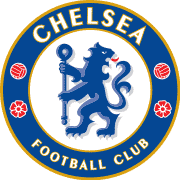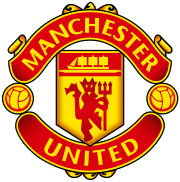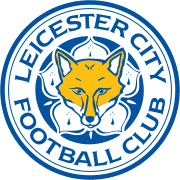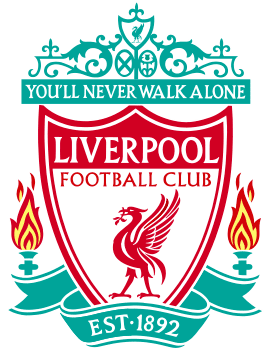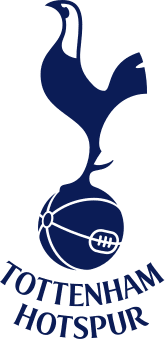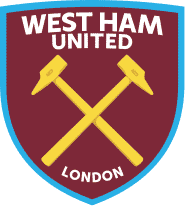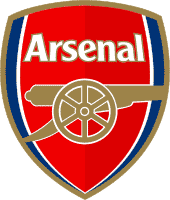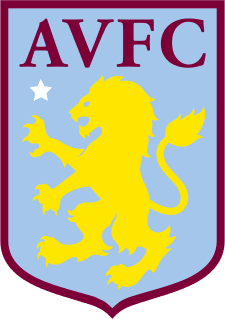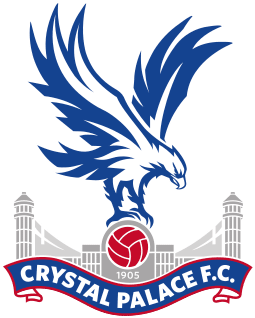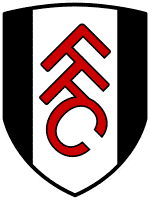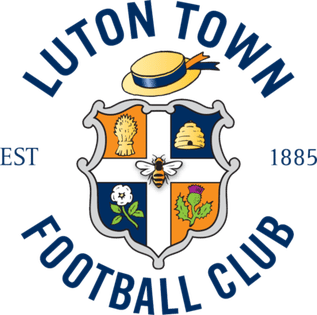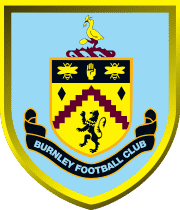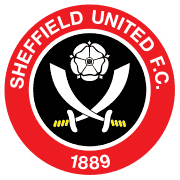Chelsea FC Tryouts & Club Guide: History, Stadium, Players, and More!

Welcome!
Discover the world of soccer with fcscout.com, your go-to scout for club tryout information, club guides, player profiles, in-depth product reviews, and more. We’re dedicated to exploring and revealing the best in each domain, empowering you with knowledge to make informed choices.
Thank you for being here!
Hi, I’m Carlos! A coach, sports enthusiast, and the founder of FCScout.com.
I fell in love with the game at a very young age like many of you. I’ve been following and playing soccer for many years.
Throughout my career, I always enjoyed helping soccer players chase their dreams, which is why I started this website. I wanted to reach a larger audience outside of my local area and fcscout.com was born.
This website is a platform I will be using to update club pages on any tryouts, stadiums, players, tech, and more from clubs around the world. I also create free recruitment profiles for players looking to have that extra competitive edge when reaching out to clubs.
That’s it. That’s my pitch for you to stick around (or browse the site as you please).
This is already too much text for a “see more” drop-down button thing. If you want to reach out to me, head on over to my contact page 🙂

Chelsea Football Club is an English professional football club based in Fulham, London. The club competes in the Premier League, the top division of English football.
Chelsea FC Youth Development System
About Chelsea FC Academy
In 2016, the Academy was awarded Category One status following an independent audit by the Premier League.
The audit process forms part of the League’s monitoring of the Elite Player Performance Plan (EPPP), created in 2012 and designed to increase the quantity and quality of homegrown English players. The categorisation system permits the best-ranked academies more contact time with young players and ensures their development teams participate in the elite competitions at youth level. Up to 10 different factors are considered in the grading including productivity rates, training facilities, coaching, welfare and education provisions.
The Academy teams compete in an extensive games programme in the Professional Development Phase (Under-17+). These are split between the Under-18s, Under-19s and development squad, with the latter two generally formed of the same group of players and coaching staff.
Chelsea FC Development Squad
Our development squad’s league commitments are in Premier League 2, which succeeded the Under-21 Premier League in the summer of 2016. This saw the age parameters increased to Under-23 and the introduction of two tiers, with promotion and relegation between the two, while our oldest academy age group was rebranded from ‘the Under-21s’ to ‘the development squad.’ Home games are generally played at Aldershot Town or Stamford Bridge.
This age group also compete in the Leasing.com Trophy, a senior Football League competition which features the 48 club sides from League One and League Two. From the summer of 2016, 16 Category One development teams were invited to participate in the competition, initially on a trial basis.

The 64 competing teams are split into 16 regionalised groups of four and each team plays each other once, with development teams playing all games away from home. In the event of a group game ending in a draw, a penalty shoot-out is held whereby the winners earn an additional group point. The top two from each group advance to the last-32 knockout round. The final is held at Wembley Stadium.
Development teams are required to field a minimum of six under-21 players in their starting team and can only play two players over the age of 21 who have played more than 40 times for the first team, while Football League clubs must field a certain number of first team players.
In 2020 our development squad were crowned Premier League 2 champions for the first time, after it decided that the league would be decided on a points-per-game basis. Meaning Chelsea, who remained unbeaten throughout all 18 games played, would take the title for the 2019/20 season.
Chelsea Under-19s
The Under-19s take part in the UEFA Youth League, a European competition that mirrors the UEFA Champions League group stage. Home games are generally played at Cobham or Aldershot Town . Teams face each other twice, both at home and away, with the group winners advancing to the last-16 and the runners-up to the play-off round.

Running parallel to the group stage is the domestic champions path, where the Under-18 champions of the 32 best-ranked UEFA associations compete in two knockout rounds of home-and-away ties.
The eight teams who progress are drawn against the group stage runners-up in the play-off round. The play-off winners join the group winners in the last-16, where single-leg ties are played up to the final. Both the semi-finals and final are held over a four-day weekend in Nyon at the, home to UEFA headquarters.
Our under-19s have twice won the UEFA Youth League with consecutive titles in 2014/15 and 2015/16, meaning the young Blues are one of the most successful teams in competition history.
Chelsea Under-18s
The FA Youth Cup has been English football’s premier cup competition at youth level for over 60 years and attracts almost 500 entrants from throughout the English football pyramid. Initially, there are a number of qualifying rounds before the First Round sees League One and League Two clubs join for the first time. Premier League and Championship clubs enter from the Third Round onwards.
The competition follows a knockout format, with extra-time played if the game is level after 90 minutes. Only those players in the Under-16, Under-17 or Under-18 age groups in the relevant season are eligible to participate. The semi-final and final are played over two legs; if aggregate scores are level at the end of the second leg, extra-time and penalties may decide the winners. There is no away goals rule in the competition. Chelsea home games are generally played at Aldershot Town in the early rounds and Stamford Bridge later in the competition.
The Under-18s, also colloquially referred to as the Youth Team, have participated in the Youth Cup every season since 1952 and have lifted the trophy on nine occasions. Only Manchester United (10) have won the trophy more.

For the bulk of the season, the Under-18s compete in the Under-18 Premier League, which splits the 24 Category One academies regionally into northern and southern leagues. Home games are played at Cobham. Teams play each other twice, both at home and away, before the regional winners compete in an end-of-season play-off to determine the national champion.
The Under-18 Premier League Cup was launched in 2017 and sees all 24 Category One teams compete, initially in a group stage format before knockout matches are played from the quarter-final onwards. Groups are comprised of two northern and two southern teams, enabling sides to face opponents outside of their regional league programme.
Teams play each other once in the group stage, either at home or away, before the group winners plus the two best runners-up advance to the quarter-finals. The knockout rounds are single-leg matches, with the final drawn to be played at one of the competing team’s home venues.
Chelsea Foundation Soccer Schools
At Chelsea FC Football Club we pride ourselves on doing things the right way, both on and off the pitch. We believe that deep down the principles that made the game of football great, remain the same. We believe in a game played fairly and competitively. We believe that a club is a community.

Whether your child is just starting out or has been playing for years, our courses can bring out the best in them as a player and as a person. Our courses cater for boys and girls, of all abilities, from ages three to 16, at a number of great venues across the area. Chelsea FC have been at the heart of our local community for over 20 years and our staff bring a wealth of knowledge and professionalism to our courses.
Co-ordinated and delivered by the multi award-winning Chelsea FC Foundation, Chelsea FC give children the opportunity to develop their football skills the Chelsea FC way; in a fun, safe and sociable environment. The funds generated from these courses help to build better lives through sport in the communities that we work in, supporting projects that span health, education, social inclusion, disability sport and employability.
For the latest up-to-date schools and information, please click here.
Chelsea Recruitment Trials
At the time of this writing, there is no official publishing’s on Chelsea trials. Please come back at a later date while we monitor this club or click here to visit their official academy news section.
EXPLORE MORE CLUBS!
Explore more professional clubs by continent.
Chelsea History
In 1955, Chelsea was awarded their first major trophy as they were crowned League Champions. The club achieved its first victory in the FA Cup in 1970 and their first success on the European stage with the UEFA Cup Winners’ Cup the following year in 1971. The club experienced a period of decline in the late 1970s and 1980s, but in the 1990s, it underwent a rebirth and had more success in cup competitions than in previous decades.
The last two decades have been the most successful in Chelsea’s history; during this time, the club won five of its six league titles as well as the UEFA Champions League. Chelsea is one of only five clubs in the world to have ever won all three of UEFA’s major club championships, and they are the only club in London to have ever taken home the Champions League trophy.

The shirts and shorts of Chelsea’s home outfit are a deep royal blue, and the team’s stockings are white. The emblem of the club depicts a ceremonial lion rampant regardant clutching a staff in its paws. The club has long-standing rivalries with both Arsenal and Tottenham Hotspur, both of which play in their immediate vicinity, as well as with Leeds United. According to the club’s attendance statistics, they have the sixth-largest fanbase in all of England. Chelsea is the sixth most valuable football club in the world, with a value of £2.13 billion ($2.576 billion), and they are the eighth highest-earning football club in the world, with earnings of over €428 million in the 2017–18 season. In terms of club value, Chelsea is the sixth most valuable football club in the world. Roman Abramovich, a Russian billionaire, has owned Chelsea Football Club continuously since 2003.
Chelsea Stadium
Since the beginning of the team’s history, Chelsea’s games have always been played at their lone and only home stadium, Stamford Bridge. It was officially opened on the 28th of April in 1877, and for the first 28 years of its existence, the London Athletic Club used it almost solely as an arena for athletics events. Football was not played there at any point during that time.

In 1904, industrialist Gus Mears and his brother Joseph purchased the ground with the intention of using it to host football matches on the now 12.5 acre (51,000 m2) property. At the time, they had also purchased land in the surrounding area, which had earlier been used as a big market garden. Archibald Leitch, a well-known football architect, was commissioned by the Mears family to create Stamford Bridge. Leitch was also responsible for the design of Ibrox Stadium, Craven Cottage, and Hampden Park. The majority of football clubs were established first, and then they searched for grounds in which to play. However, Chelsea was established for the purpose of playing at Stamford Bridge.

Chelsea Crest
There have been four primary crests used by Chelsea, each of which has been subject to a few minor modifications. The first one was chosen when the club was first established, and it depicts a Chelsea pensioner. These are retired military personnel who live in the area around the Royal Hospital Chelsea. This was one of the factors that led to the club being given the nickname “pensioner,” which stuck for the next fifty years despite the fact that it was never printed on the team’s uniforms. After Ted Drake took over as manager of Chelsea in 1952, he immediately set out to update the organization. He was of the opinion that the Chelsea pensioner crest had become out of date and requested that it be changed.
A temporary emblem consisting of the initials C.F.C. was chosen to wear for a period of one year. The club crest was altered in 1953 to depict an upright blue lion looking backwards while clutching a staff. This alteration took place. The “lion rampant regardant” was taken from the arms of the then-club president Viscount Chelsea, and the staff was taken from the Abbots of Westminster, who were former Lords of the Manor of Chelsea. It was based on elements in the coat of arms of the Metropolitan Borough of Chelsea. Specifically, it was based on elements in the coat of arms of the Metropolitan Borough of Chelsea. In addition to that, there were two footballs and three red roses on there to signify England. In the early 1960s, this version of the Chelsea crest was the first one to appear on the club’s shirts.

The former symbol of a rampant lion could not be patented, which led to the redesign of Chelsea’s crest in 1986, when Ken Bates took over as the club’s owner. This was part of yet another attempt to bring the club into the contemporary era. The new C.F.C. badge included a lion that was less heraldic and more naturalistic, and it was colored white rather than blue. It stood atop the organization’s initials. This continued for the subsequent 19 years, albeit with a few adjustments along the way, such as the adoption of other color schemes, such as using yellow from 1995 to 1999 and red from 1987 until 1999, before reverting back to white in 2000.
It was decided in 2005 that the club’s crest should be changed once more because of the new ownership of Roman Abramovich, the approaching centenary of the club, and the demands of fans to bring back the popular badge from the 1950s. This decision was made despite the fact that the club had just turned 100 years old. The new crest, which was formally approved for the beginning of the 2005–06 season, marked a return to the former design, which had been used from 1953 until 1986 and featured a blue heraldic lion grasping a staff. This design had been used from 1953 until 1986. This was accompanied with the phrases “100 YEARS” and “CENTENARY 2005–2006” during the centenary season, which were placed on the top and bottom of the crest correspondingly.
Ownership
Gus Mears established Chelsea Football Club in 1905. The year was 1905. Following his passing in 1912, his heirs maintained ownership of the club until 1982, when Ken Bates purchased it from Mears’ great-nephew Brian Mears for the price of one pound. In March of 1996, Bates purchased a controlling stake in the club and then listed Chelsea on the AIM stock exchange. During the middle of the 1990s, Chelsea supporter and businessman Matthew Harding became a director of the club and loaned £26 million to the organization so that it could invest in new players and build a new North Stand.
In July of 2003, Roman Abramovich paid £30 million to acquire slightly more than half of Chelsea Village plc’s share capital. This purchase included Bates’ 29.5 percent stake in the company. In the weeks that followed, Abramovich paid 35 pence per share to buy out the majority of the remaining 12,000 shareholders, successfully completing a takeover that cost £140 million. Other shareholders at the time of the takeover included BSkyB (9.9 percent), the estate of Matthew Harding (21 percent), and a number of unnamed offshore trusts (different percentages each). Following the achievement of the 90 percent share requirement, Abramovich reclaimed private ownership of the club and withdrew it from trading on the AIM exchange on August 22, 2003. The club also had debts of around £100 million when Abramovich took over, which included a ten-year £75 million Eurobond that was taken out in 1997 by the Bates regime to buy the freehold of Stamford Bridge and finance the redevelopment of the stadium.
These debts were paid off when Abramovich took over the club in 2003. According to Bruce Buck, Chelsea was having trouble paying an installment that was due in July of 2003 since the interest on the loan was 9 percent, which resulted in an annual cost to the club of almost 7 million pounds. A portion of this loan was quickly reimbursed by Abramovich; however, the remaining balance of £36 million on the Eurobond was not paid in full until the year 2008. Since that time, the club has not owed any money to any outside parties. Abramovich changed the ownership name of the club to Chelsea FC plc. The ultimate parent company of Chelsea FC plc is Fordstam Limited, which Abramovich controls. Abramovich provides supplementary funding for Chelsea in the form of interest-free soft loans, which are distributed to the club via his holding firm Fordstam Limited.
In December 2009, Abramovich converted all of the loans into equity, bringing the total amount of the loans to £709 million. As a result, the club is no longer responsible for any debt, while the debt is still owed to Fordstam. During the first nine years of Abramovich’s ownership of Chelsea, the club did not earn a profit, and in June 2005, the club posted record losses of £140 million. In November 2012, Chelsea Football Club revealed that it had achieved a profit of £1.4 million for the fiscal year that ended on June 30, 2012. This marked the first time that Abramovich’s ownership of the club had resulted in a profitable year. This was followed by a loss in 2013, which was then followed by their biggest ever profit of £18.4 million for the year that ended in June of 2014.
During the 2018 season, Chelsea reported a record-breaking profit after taxes of £62 million. A 2012 report by Brand Finance ranked Chelsea fifth among football brands and valued the club’s brand value at US$398 million – an increase of 27 percent from the previous year, also valuing them at US$10 million more than the sixth best brand, London rivals Arsenal – and gave the brand a strength rating of AA. The report also ranked Chelsea fifth among football brands and valued the club’s brand value at US$398 million (very strong).
A valuation of £1.15 billion ($1.66 billion) earned Chelsea the seventh spot on Forbes magazine’s list of the most expensive football clubs in the world in 2016. With an annual commercial revenue of £322.59 million, Chelsea currently holds the eighth spot in the Deloitte Football Money League as of the 2016 season. Recent financial records for the club emphasize the sum of £26.6 million that was lost as compensation to Antonio Conte, who was the club’s former head coach, for being fired, as well as for paying off his backroom staff and the legal fees that followed.
Abramovich handed over “stewardship and care” of Chelsea FC to the Chelsea Charitable Foundation on February 26, 2022, in the middle of the Russo-Ukrainian War. This occurred during the time. On March 2, 2022, Abramovich issued an official statement stating that he is selling the club owing to the continued situation in Ukraine. The message was published online. Despite the fact that on March 10 the government of the United Kingdom placed a freeze on Abramovich’s assets in the United Kingdom due to his “close ties with the Kremlin,” it has been made abundantly clear that the Chelsea club will be allowed to operate in terms of activities that are related to football. On March 12th, Abramovich was stripped of his directorship responsibilities at Chelsea Football Club by the Premier League. On March 19, 2022, Raine Capital, who were overseeing the sale of the club, received a total of five confirmed proposals to acquire Chelsea FC.
The bids were presented to Raine Capital. Among these were a group of investors led by the Ricketts family (including Joe and Pete Ricketts), the Swiss and American businessmen Hansjorg Wyss and Todd Boehly, Aethel Partners headed by the Portuguese Ricardo Santos Silva and the British multi-millionaire businessman Nick Candy, who were supported by the former Chelsea striker Gianluca Vialli. The club ultimately made the announcement on May 7 that “terms have been negotiated” for a new ownership group that would be led by Todd Boehly and Clearlake Capital. It was confirmed on May 30 that a group led by Boehly and Clearlake Capital had successfully completed the purchase of the club. In addition, Wyss and Mark Walter are both members of the consortium. In addition to owning the Los Angeles Sparks, the Los Angeles Dodgers, and the Los Angeles Lakers, Walter and Boehly are also proprietors of the Los Angeles Clippers. The transaction had been granted all of the necessary permits from the governments of the United Kingdom and Portugal, as well as from the Premier League and other authorities.
